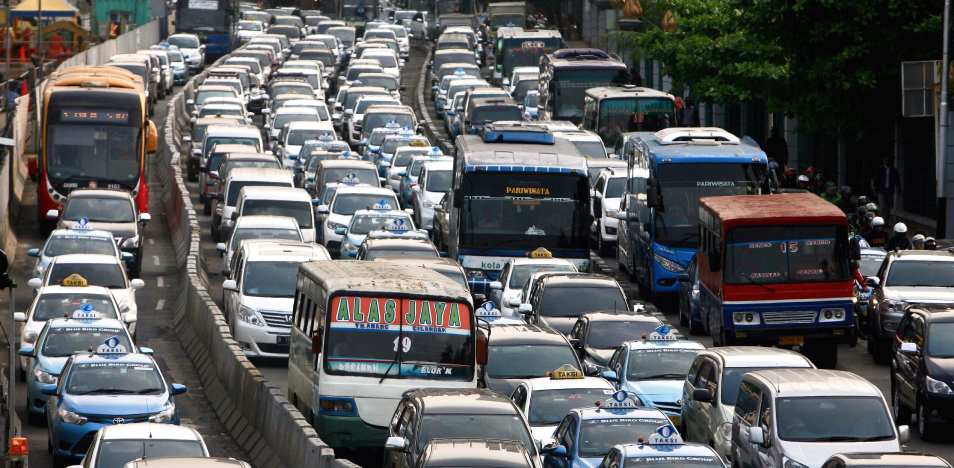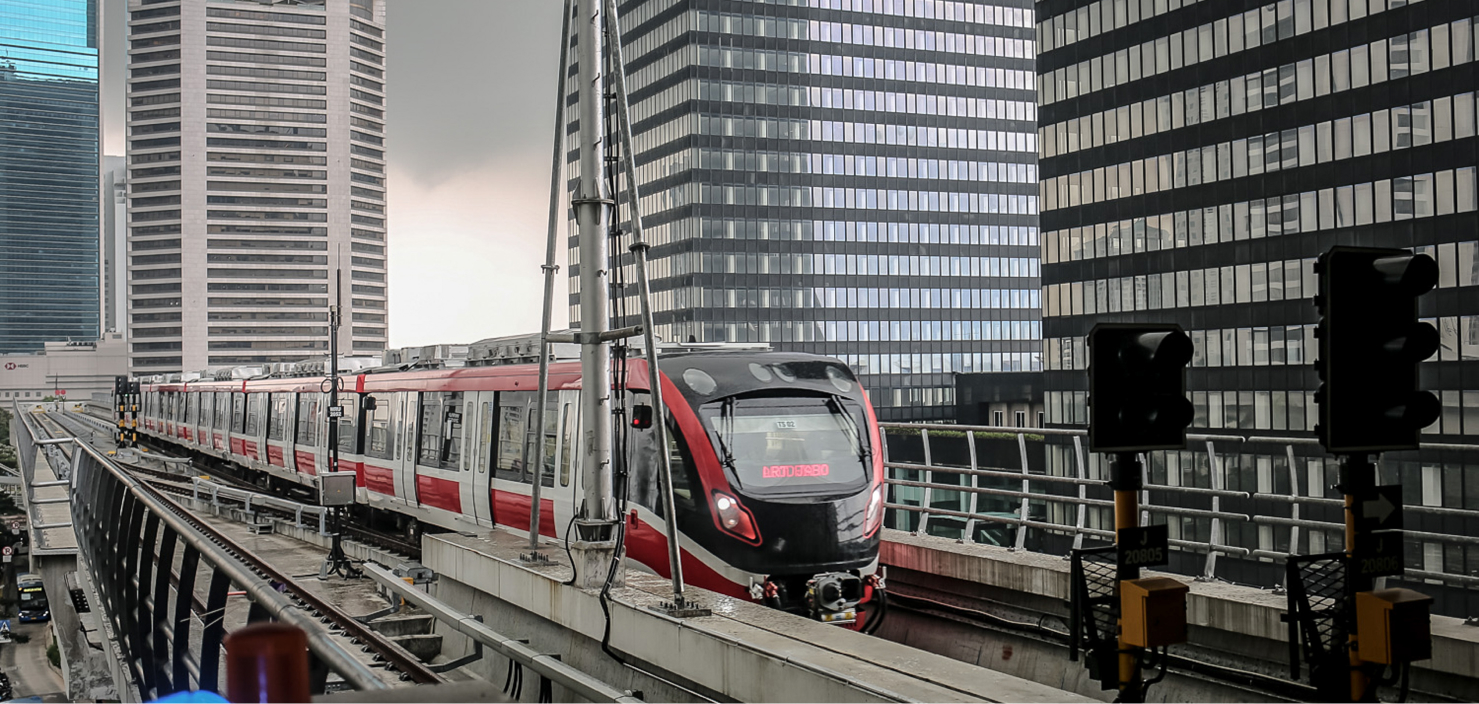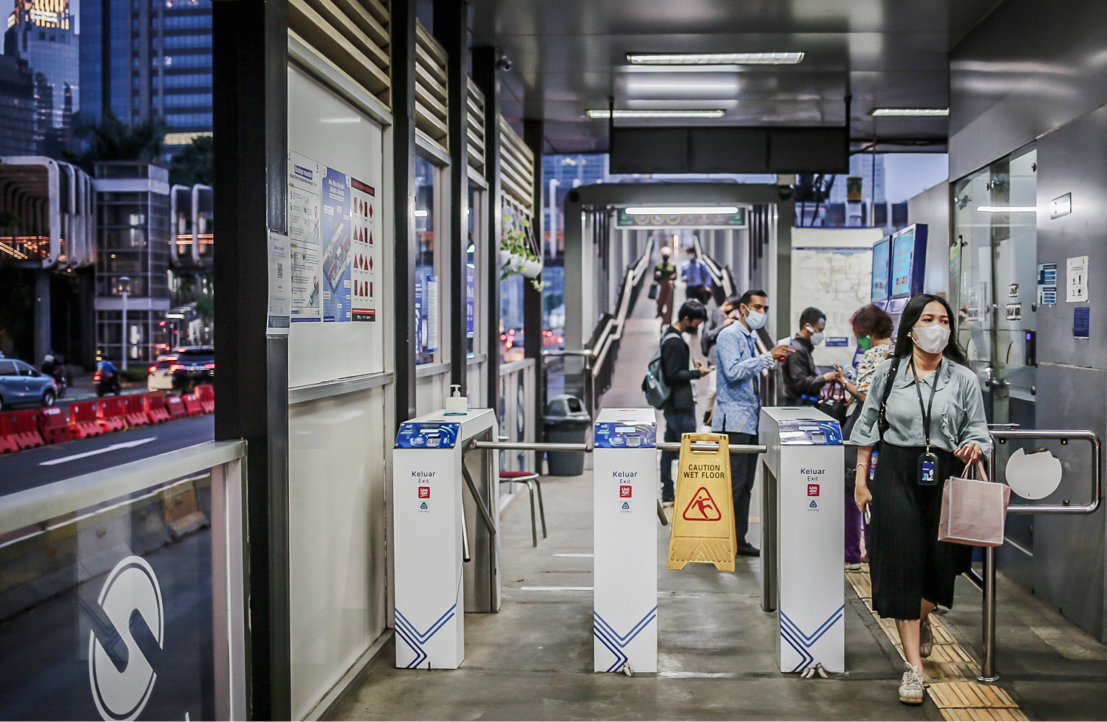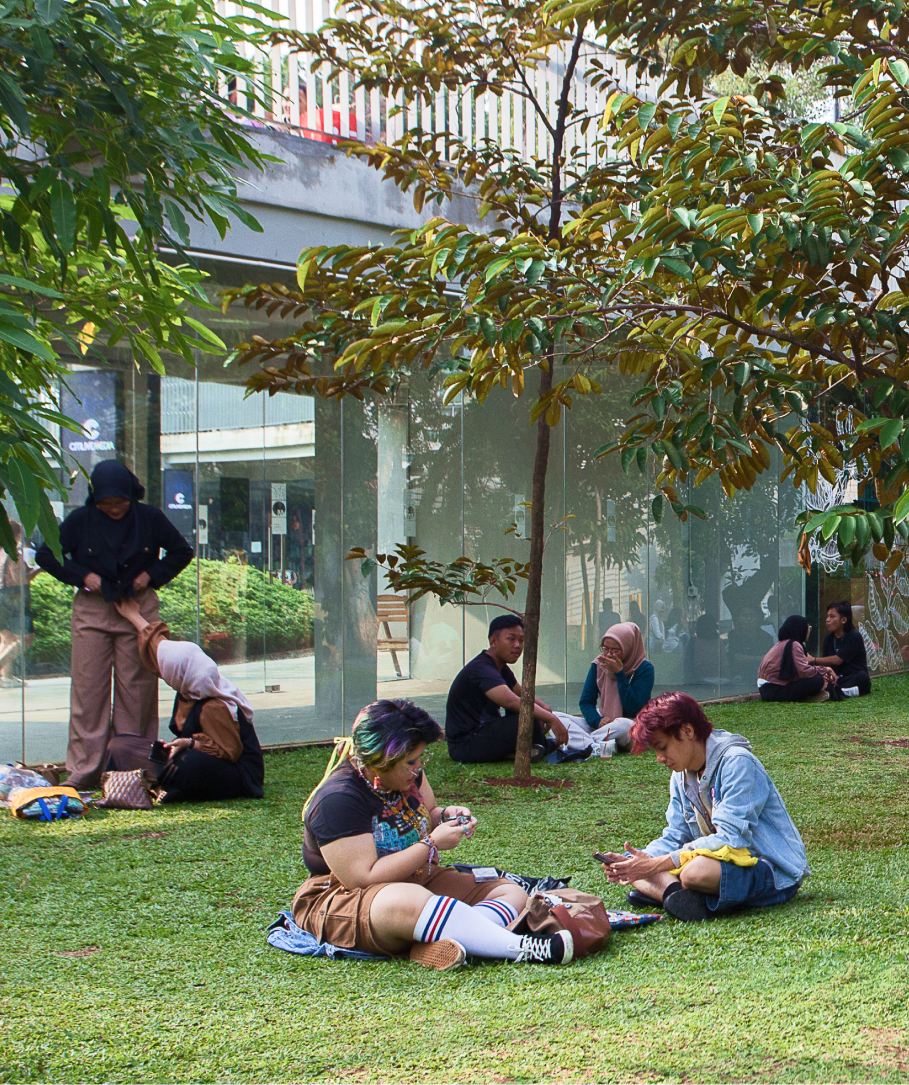
00
By Marisa S./The Jakarta Post
June 22, 2024J
akarta may be commemorating its final anniversary this month as the national capital, but for more than 30 million people, the city will continue to be the country’s economic heart and the bustling hub of the largest metropolitan area in Southeast Asia.
Yet Jakarta will also continue to suffer under the weight of all the reasons it is losing special province status in the first place, foremost among them the legendary traffic jams that cause estimated losses of Rp 65 trillion (US$4 billion) each year.
To try to solve this complex challenge, the city administration has designed plans to navigate Jakarta out of its gridlocked roads. From a rail-based mass transit master plan to transit-oriented developments (TODs) near train stations, we explore how Jakarta aims to untangle its snarled streets and find a smooth path forward.
An Ambitious Goal
01

(JP/Seto Wardhana)

(JP/Seto Wardhana)
The “Big Durian” may be home to just 11 million residents, but it also caters to 20 million others in the satellite cities that make up Greater Jakarta. Last year, 21.75 million daily trips occurred in the city alone, with the vast majority, or 81.14 percent, using private vehicles.
It’s no wonder that the city was ranked 30th out of 387 cities for worst traffic congestion in the 2023 TomTom Traffic Index. Last year, the Dutch navigation firm found that it took an average 23 minutes, 20 seconds for a vehicle to travel just 10 kilometers in Jakarta, compared to 16 minutes, 50 seconds in Kuala Lumpur and Singapore.
But the Jakarta administration has an ambitious goal: By 2045, it wants to more than triple public transport use from 18.86 percent currently to 60 percent.

It might have been at a snail’s pace, but the Jakarta administration has actually been working to improve mass transit options since 2004, when year it launched the Transjakarta bus rapid transit (BRT) to complement the city’s existing public transport services within the city, such as the Greater Jakarta Commuter Line (KRL), city buses, angkot (public minivans), bemo (three-wheeled public vans) and bajaj (three-wheeled taxis).
Two decades later, Greater Jakarta commuters now have access to long-awaited modern rail services: the North-South line of the Jakarta mass rapid transit (MRT) connecting Lebak Bulus in South Jakarta to the Hotel Indonesia traffic circle (Bundaran HI) in Central Jakarta; the Jakarta light rapid transit (LRT) that runs from Pegangsaan Dua in North Jakarta to the Jakarta International Velodrome in East Jakarta; and the Greater Jakarta LRT that carries passengers from the West Java cities of Bekasi and Depok to Jakarta.
Rail-based masterplan
02
Syafrin Liputo
00:00Jakarta Transportation Agency Syafrin Liputo explains the rail-based public transport masterplan.

The road- and rail-based public transport services available today in Jakarta cover 89.3 percent of the city, according to the Jakarta Transportation Agency.
Agency head Syafrin Liputo said the city would see even more massive rail developments in the coming years.
“The Jakarta administration has declared rail-based transport as the backbone of urban transportation in Jakarta. Therefore, we are developing the railway networks massively,” Syafrin told The Jakarta Post.

(JP/Muhammad Zaenuddin)
The Jakarta administration has declared rail-based transport as the backbone of urban transportation in Jakarta. Therefore, we are developing the railway networks massively
- Syafrin Liputo
Why trains?
“Because one [train] can take more passengers, hence more people with activities in Jakarta can move in one go,” he replied.
The city administration is drafting a bylaw on Jakarta’s transportation master plan that spans the next two decades. Under this master plan, an extensive railway network spanning some 200 km will branch out from the existing 21.8 km of the first phases of the Jakarta MRT and Jakarta LRT.
This expansion plan includes the ongoing construction of the second phase of the Jakarta MRT to extend it from Central Jakarta’s Bundaran HI to North Jakarta’s Ancol, scheduled to commence partial operations in 2027, and the Jakarta LRT extension from the Velodrome in East Jakarta to Manggarai in South Jakarta targeted for full operations by 2026.
Furthermore, phase one construction on the Jakarta MRT’s new east-west line, running from Medan Satria at the border of Jakarta and Bekasi to Tomang in West Jakarta, is expected to break ground this year.
This is part of a larger plan connecting Cikarang in West Java to Balaraja in Tangerang regency, which will be managed by the provincial administrations of West Java and Banten.
The expansion plan also aims to see the Jakarta LRT eventually shuttling commuters to Klender and Halim in East Jakarta, Jakarta International Stadium (JIS) in North Jakarta and Rajawali in Central Jakarta, as well as building the Pulo Gebang-Joglo line.
Another planned line that could be part of either the Jakarta MRT or LRT aims to link Karet in South Jakarta, Pesing in West Jakarta and Rajawali Kemayoran in Central Jakarta, as well as Pulo Gebang in East Jakarta, JIS and Pantai Indah Kapuk (PIK) in North Jakarta and Lebak Bulus in South Jakarta.
Interactive Railway Map
03
Legend
Year
2019
2026
Plan
Year
2019
2027
2029
2032
2033
Plan
Converting Commuters
04

(JP/Muhammad Zaenuddin)

Daud Joseph
00:00PT Transjakarta operational and safety director Daud Joseph discusses their shift in focus from route expansion to service improvement.

For the rail-based masterplan to function as intended, road-based public transport will provide feeder services to shuttle commuters to train stations.
“Transjakarta can pick up passengers outside the rail networks and bring them to the nearest stations,” Syafrin said.
PT Transjakarta operational and safety director Daud Joseph said that after the bus network’s “period of massive expansion” in 2016-2019, when the number of routes grew sixfold, the company was now focusing on improving its services to attract passengers.
With more than 4,700 buses and public minivans called Mikrotrans plying 234 routes as of this April, Transjakarta now serves 89.3 percent of Jakarta's neighborhoods.
“We will focus on intensifying our service quality, not on massive expansion of routes. We won't be adding new routes aggressively like we used to, [instead] we want to ensure good services in the existing routes,” Daud said. Such efforts included adding more bus and public minivan stops, increasing the number of vehicles operating during peak hours and maintaining punctuality.
These naturally come at a high cost. While the city fully funded the first and second lines of the Jakarta LRT for a price tag of Rp 12.3 trillion ($757 million), Japanese loans totaling over Rp 50 trillion are funding the Jakarta MRT’s North-South line and the first phase of the East-West line.
Will such large investments indeed reduce the city’s perennial traffic congestion?

This outcome is entirely dependent on whether enough private vehicle users are convinced that it would be better to leave their cars at home and take public transport instead. That might be a tall order, though.
A 2023 Statistics Indonesia (BPS) survey found that eight out of 10 Greater Jakarta commuters were still reliant on private vehicles. Furthermore, only 3.8 percent of commuters who used private vehicles said they were willing to switch to public transport.
According to the respondents, taking public transport was simply not a practical alternative to driving their own cars, because it often involved longer travel and wait times.
If most commuters would still rather sit in their air-conditioned vehicles while crawling through gridlocked roads, will Jakarta’s massive transportation master plan succeed in navigating the city out of its appalling congestion?
Syafrin admitted that the lack of commuters’ willingness to leave their cars and motorcycles at home was the biggest challenge for the administration. A comprehensive, integrated transit system encompassing physical infrastructure, services, routes, payments, data and public campaigns was thus needed to entice people to shift to public transport, he said.
Transit-oriented development
05

(JP/Muhammad Zaenuddin)
For this huge, integrated undertaking, the Jakarta administrations has joined hands with the central government.
An example of this multimodal transport development vision can be seen at Dukuh Atas, a major junction station for the KRL, the MRT, the LRT, the Soekarno-Hatta Airport Raillink and the Transjakarta BRT: Within a 1 km radius, a skywalk connects the KRL with the Greater Jakarta LRT, while revitalized sidewalks on Jl. Blora and Jl. Kendal connect the Jakarta MRT and the airport train, all accessible within 15-20 minutes by foot.
In areas where a multimodal transit hub is located, city officials say the transport system is to be integrated into a transit-oriented development (TOD), which promotes mixed-use development to ease urban mobility.
“We are changing the paradigm of urban transport from car-oriented development to transit-oriented development, or TOD. When we talk about TOD, the key is walkability and bikeability,” Syafrin said.
Syafrin Liputo
00:00Jakarta Transportation Agency Syafrin Liputo explains the rail-based public transport masterplan.

He said the Jakarta Transportation Agency had laid out 313 km of bicycle lanes and the Jakarta Bina Marga Agency about 300 km of sidewalks across the city.
In 2017, the city administration appointed city-owned transportation company PT MRT Jakarta as “master developer” of TODs near MRT stations. The company then set up subsidiaries with state-owned rail operator PT KAI and PT Transjakarta to realize the integration plan. However, MRT Jakarta has been facing difficulties in building TODs due to its limited authority and limited land availability around its stations.
Yulham Ferdiansyah Roestam, president director of MRT Jakarta and Transjakarta’s property arm PT Integrasi Transit Jakarta, acknowledged that many buildings already existed in the areas around MRT stations.
“I cannot say that the [TOD] approach in Jakarta has adopted, for instance, that of Japan, Seoul, Korea, London, or other [countries]. We have to develop it based on our own approach,” he told the Post.
(JP/Okky Ardya)
I cannot say that the [TOD] approach in Jakarta has adopted, for instance, that of Japan, Seoul, Korea, London, or other [countries]. We have to develop it based on our own approach
- Yulham Ferdiansyah Roestam

Yulham Ferdiansyah
00:00Yulham Ferdiansyah Roestam, president director of PT Integrasi Transit Jakarta, discusses the company’s approach to transit-oriented development.

When the property sector suffered during the COVID-19 pandemic, Integrasi Transit Jakarta saw an opportunity to revitalize public spaces with the potential to boost public transport ridership.
For example, Martha Christina Tiahahu Literacy Park, located right under the entrance of Jakarta MRT’s Blok M Station, was revitalized toward the end of 2022 so it could accommodate community events and creative programs.
The activities and other events that MRT Jakarta and its subsidiaries have held in the park contributed a 5 percent rise in MRT ridership, according to the company.
Ferdiansyah said the same approach would be used for other public spaces when appropriate.
In the coming years, Jakartans can expect the construction of other TOD projects currently in the pipeline, such as a sidewalk revitalization project for Karet KRL Station in Tanah Abang, an underground pedestrian tunnel and a pedestrian deck at Dukuh Atas Station, an extended concourse at the Bundaran HI and Fatmawati stations, the Aspen Peak by Rumapadu mixed-use development near Fatmawati Station, a mixed-use development and park-and-ride facility at Lebak Bulus Station and mixed-use developments at Blok M Station and in Ex-Glodok Kota Tua.
Push and pull policies
06

(JP/Muhammad Zaenuddin)
MRT Jakarta president director Tuhiyat said the company was also implementing a number of short-term strategies to lure people to use the MRT. One of these was its cooperation with feeder services, such as buses, public minivans, taxis and ride-hailing companies.
The Jakarta MRT now booked an average 96,000 daily passengers, of which 22 percent were contributed by its feeder service cooperation, he said.
“MRT cooperates with feeder services because we aren't able to serve the first and last miles,” he said.
“However, the long-term strategy to increase public transportation use is not like that but a comprehensive integration, at least in terms of [multisectoral] management, physical integration and payment systems.”
But these “pull policies” were not enough, noted Gonggomtua Sitanggang, Southeast Asia director at the Institute for Transportation and Development Policy (ITDP), who stressed the importance of disincentives, or “push policies”, for private vehicle use.
“In order to encourage people to use public transport, there should also be disincentives for private motorized vehicles, such as congestion charge, low-emission zones and progressive parking pricing,” he said.
“It cannot be only one approach [pull policies].”
Data from the BPS’s Jakarta show that the number of private two-wheeled and four-wheeled vehicles registered in Greater Jakarta respectively increased 3.52 percent and 1.86 percent per annum between 2018 and 2022, with more than half registered in Jakarta.
Gonggomtua S.
00:00ITDP Southeast Asia director Gonggomtua Sitanggang explains why “pull policies” are not enough.

To push residents into shifting from private vehicles, the city administration has relied on its odd-even license plate policy since 2016, applying it to 25 roads during peak hours.
The policy replaced the 3-in-1 carpooling scheme in place for 13 years, which permitted passage on certain roads at certain times of the day only for vehicles with at least three passengers, including the driver. That scheme was a visible failure, evidenced by the long, daily lines of passengers-for-hire dubbed “joki” along access streets to the restricted roads.
According to city officials, other existing push policies include the higher fees imposed at 34 parking lots for vehicles that have not passed emission tests and the low-emission zone in Kota Tua, which limits the motorized vehicles that can enter the area.
Traffic-reduction measures
07

(JP/P.J. Leo)
After eight years of implementation, Syafrin admitted that the odd-even policy needed to be evaluated.
Many believe the policy has only prompted people with sufficient means to simply buy more vehicles.
This is why Jakarta is looking to implement the electronic road pricing (ERP) system, under which road users drivers have to pay fees to pass certain thoroughfares. The ERP proposal has been on the table since 2007, with the city administration and legislature still deliberating the related draft bylaw.
“To be able to go further with the ERP and other measures, we are aligning our city regulations with the new Jakarta Special Status Law,” Syafrin said.
“The [traffic reduction measures] also include the city administration's authority over the ownership and age of motorized vehicles, as well as public transport subsidies for satellite cities.”
Yusa Permana, the Jakarta head of the Indonesia Transportation Society (MTI), urged the city administration to take a holistic approach to tackling congestion, stressing the importance of better data and information.
Yusa Permana
00:00Yusa Permana, the Jakarta head of the Indonesia Transportation Society (MTI), explains the key to developing an adequate public transport system.

“The key to developing an adequate public transport system is to have good baseline data, meaning that the origins and destinations [are identified] and not only in the morning [peak hours],” he said.
“People used to be mobile in the morning and evening, but this doesn’t seem to be the pattern these days […] The conventional solution is to open more routes, but does this align with what the city needs in this dynamic condition?
“There are millions of trips in a day but why, for instance, does Transjakarta only have 1 million [daily passengers]? Does the problem lie in the push and pull policies, or other factors? What about social engineering? There are missing analyses to dig deeper into,” said Yusa.
After collecting the data, it should then be used as the basis for multi-stakeholders to formulate integrated planning and action plans, he added.
Yusa emphasized that the city’s transport agency and transportation operators should not be the only ones responsible for developing a solid transportation system, as it was a multisectoral undertaking that should involve other agencies that oversaw parks, sidewalks and other public facilities.
According to him, only with an integrated, holistic effort based on reliable data will Jakarta be able to find its way out of its gridlocked roads.

